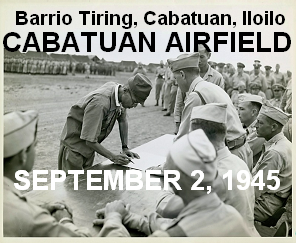
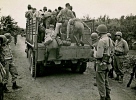
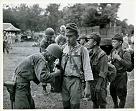
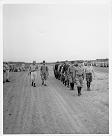
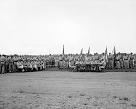
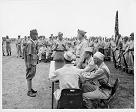
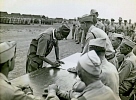
Col. Ryoichi Tozuka signs the surrender instrument
as Col. Raymond G. Stanton looks on.
Cabatuan Airfield
Barrio Tiring, Cabatuan, Iloilo
Panay Island, Philippines, September 2, 1945
|
|
- o -
|
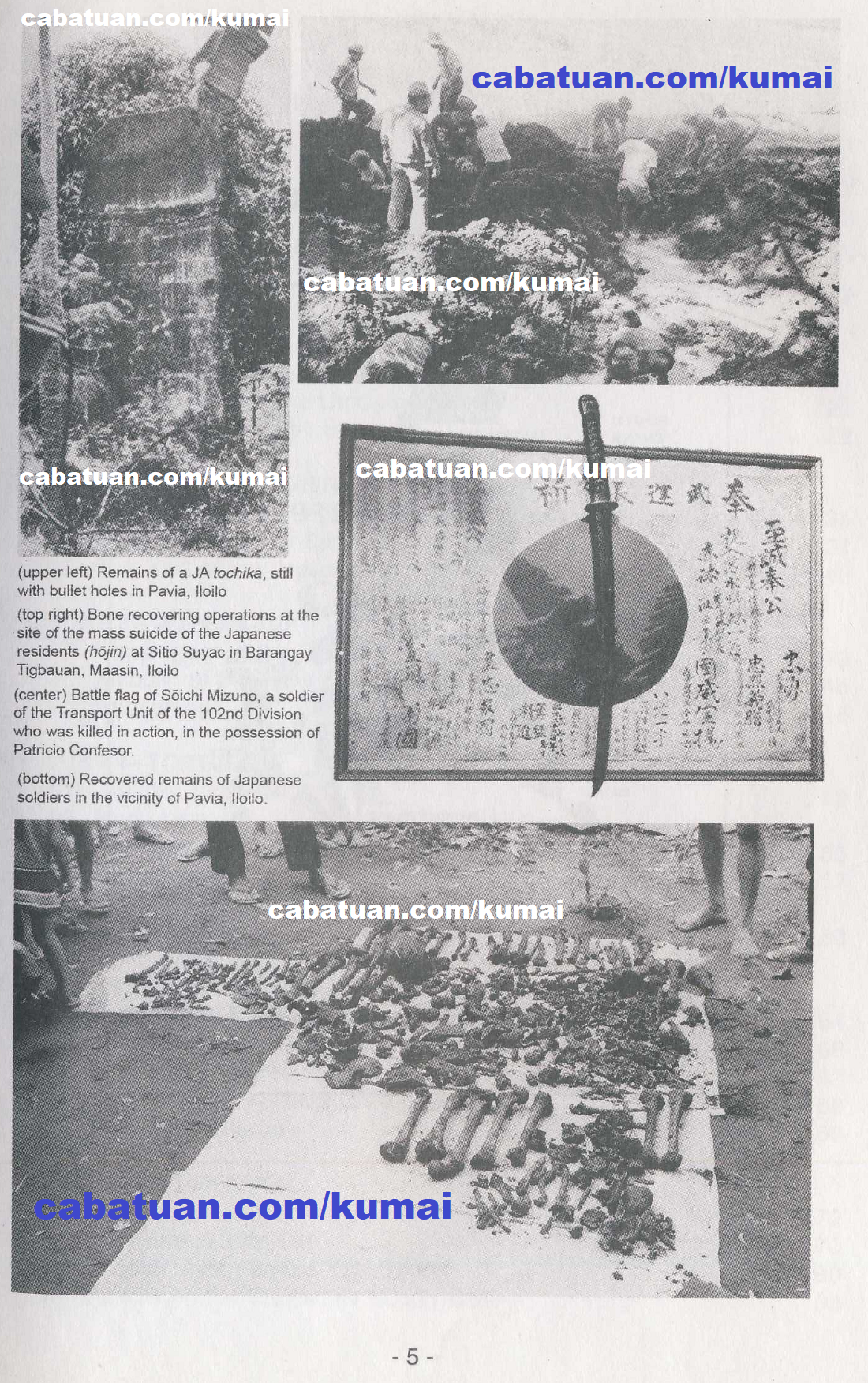
(upper left) Remains of a JA tochika, still with bullet holes in Pavia, Iloilo
(top right) Bone recovering operations at the site of the mass suicide of the Japanese residents (hojin) at Sitio Suyac in Barangay Tigbauan, Maasin, Iloilo
(center) Battle flag of Soichi Mizuno, a soldier
of the Transport Unit of the 102nd Division
who was killed in action, in possession of Patricio Confesor
(bottom) Recovered remains of Japanese soldiers in the vicinity of Pavia, Iloilo
|
|
5.2 Philippine Independence
In the beginning of October 1943, I attended a poison gas seminar at the garrison headquarters in Cebu City. Independence Day of the Philippines came in October 14 as promised by Prime Minister Hideki Tojo.
The guerrillas were then very quiet, abiding by the ‘Lie Low’ policy. With independence, the Gunsei Kambu restored political sovereignty to Governor Caram in Iloilo City. There were many dance parties held to celebrate. Japanese companies – such as that of Ishihara for copper mining, the Shimamoto Ship Building, Mitsui Bussan Kaisha, and Nihon Boseki – became active in Iloilo City. Fishing boats from Yaizu (Shizuoka prefecture) of Japan, headed by a Mr. Mukai, were landing large amounts of fish.
Moreover, an Iloilo branch of the Japanese consulate was opened in front of St. Paul’s Hospital with Mr. Shigeo Imai of the Foreign Ministry as consul.
|
|